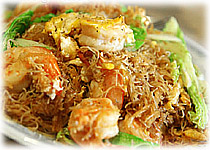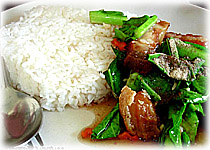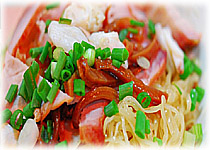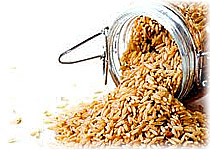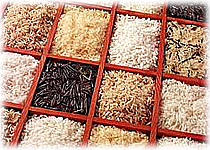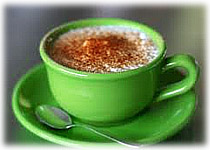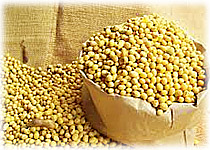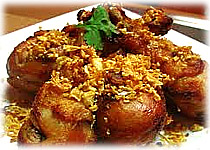1. Indonesia (43 Pirate Attacks Since January 1, 2012)Attacked Vessel: Rudolf Schulte
National Flag: Singapore
Vessel Type: Chemical Tanker
Date: Sept. 3, 2012

Indonesia’s 17,500 islands and their surrounding waters now take the title as the world’s most heavily pirated. Shortly before 11 p.m. at Belawan Anchorage, the docked Rudolf Schulte, shown here, was boarded by six pirates who climbed aboard using a long bamboo pole topped with a metal hook. A sailor on duty spotted the men, who were armed with guns and knives. The pirates noticed the sailor as well, and attacked him as he tried to contact the ship’s bridge on a handheld radio. The robbers swiped his walkie-talkie, thrust him to the deck and bound him. They then turned to the ship’s stores and began to plunder. The raiding may have distracted the pirates, however, as the sailor managed to free himself and take off on foot toward the bridge. He raised a general alarm. The sound frightened the pirates, who fled. Indonesian authorities were informed, but as is often the case, their efforts were too little, too late. The six pirates, with their contraband, escaped into the night, free to attack again.
2. Somalia (31 Pirate Attacks)Attacked Vessel: MSC Jasmine
National Flag: Panama
Vessel Type: Container
Date: Jan. 5, 2013

Somalian piracy isn’t as widespread as it was five years ago, but it’s still a serious problem. The mostly Ukrainian crew of MSC Jasmine was underway in broad daylight when six pirates in a skiff began chasing their ship. Shortly afterward, the attackers opened fire with automatic weapons and rocket-propelled grenades. The master of MSC Jasmine raised an alert, sent most of his sailors to the ship’s citadel, and ordered his security team to return fire. The pirates retreated, but didn’t get far. Two warships responding to MSC Jasmine’s distress signal, the American USS Halyburton and French FS Surcouf, intercepted the skiff and caught its mother ship to boot. Twelve pirates were taken into custody.
3. Nigeria (22 Pirate Attacks)Attacked Vessel: PM Salem
National Flag: Honduras
Vessel Type: Offshore Support Vessel
Date: Dec. 13, 2012

Pirates arm themselves no matter where on the globe they operate, but perhaps no pirates on earth arm themselves with such high-caliber weapons as the pirates in Nigeria have over the last year. PM Salem was underway about 25 nautical miles southwest of Bayelsa, Nigeria, when pirates in a boat approached quickly from the rear of the vessel. The interlopers were armed with machine guns, and began firing on PM Salem, pictured, as they chased the Honduran vessel. The ship’s master opened up his throttle, fired off a distress message and ordered all crew except for himself and the onboard security team to a safe room. The security team took positions on PM Salem’s stern and returned fire. A vicious fight ensued and went on for 20 minutes before the security team finally drove off the attackers. Their successful efforts came at a horrific price, however: Three security team members were shot, one of them losing his life.
4. Gulf of Aden (10 Pirate Attacks)Attacked Vessel: North Sea
National Flag: Singapore
Vessel Type: Tanker
Date: Feb. 22, 2012

Sometimes, the pirates shoot back. Crewmembers aboard the North Sea were already on alert after spotting a suspicious dhow—a wooden sailing vessel that pirates sometimes use as a “mother ship”—in the vicinity. Shortly after, the men saw a small skiff about 1.5 nautical miles away and closing in at 20 knots. The ship’s master sent a distress signal to the UK Maritime Trade Operation, a Royal Navy fleet that runs anti-pirate patrols in the Gulf of Aden. The British, though far distant, replied that they would immediately dispatch a military helicopter. The skiff drew closer, and security personnel aboard the North Sea saw that the pirates were armed with AK-47 assault rifles. Security fired warning shots, and the pirates immediately fired back. A ship-to-ship firefight broke out, with the pirates reeling off more than 50 rounds. Finally, they broke off the attack. Despite an extensive aerial search, the pirates were never located.
5. (tie) India (7 Pirate Attacks)Attacked Vessel: Maersk Visual
National Flag: Singapore
Vessel Type: LPG Tanker
Date: July 4, 2012

It doesn’t take a speed boat to steal from a ship that’s sitting still. The six pirates who attacked the Maersk Visual, seen here, arrived at the anchored tanker just before 7 a.m. in a long, wooden boat with a sail and oars. The Maersk Visual’s officer of the watch spotted the boat alongside and ordered a sailor to investigate. The sailor spotted two strange men hauling ship property across the deck and gave chase. The pirates jumped into their wooden boat and started rowing. Crewmembers on Maersk Visual raised an alarm and called Visakhapatnam Anchorage port control, but amazingly, the back-to-basics pirates got away with their booty.







